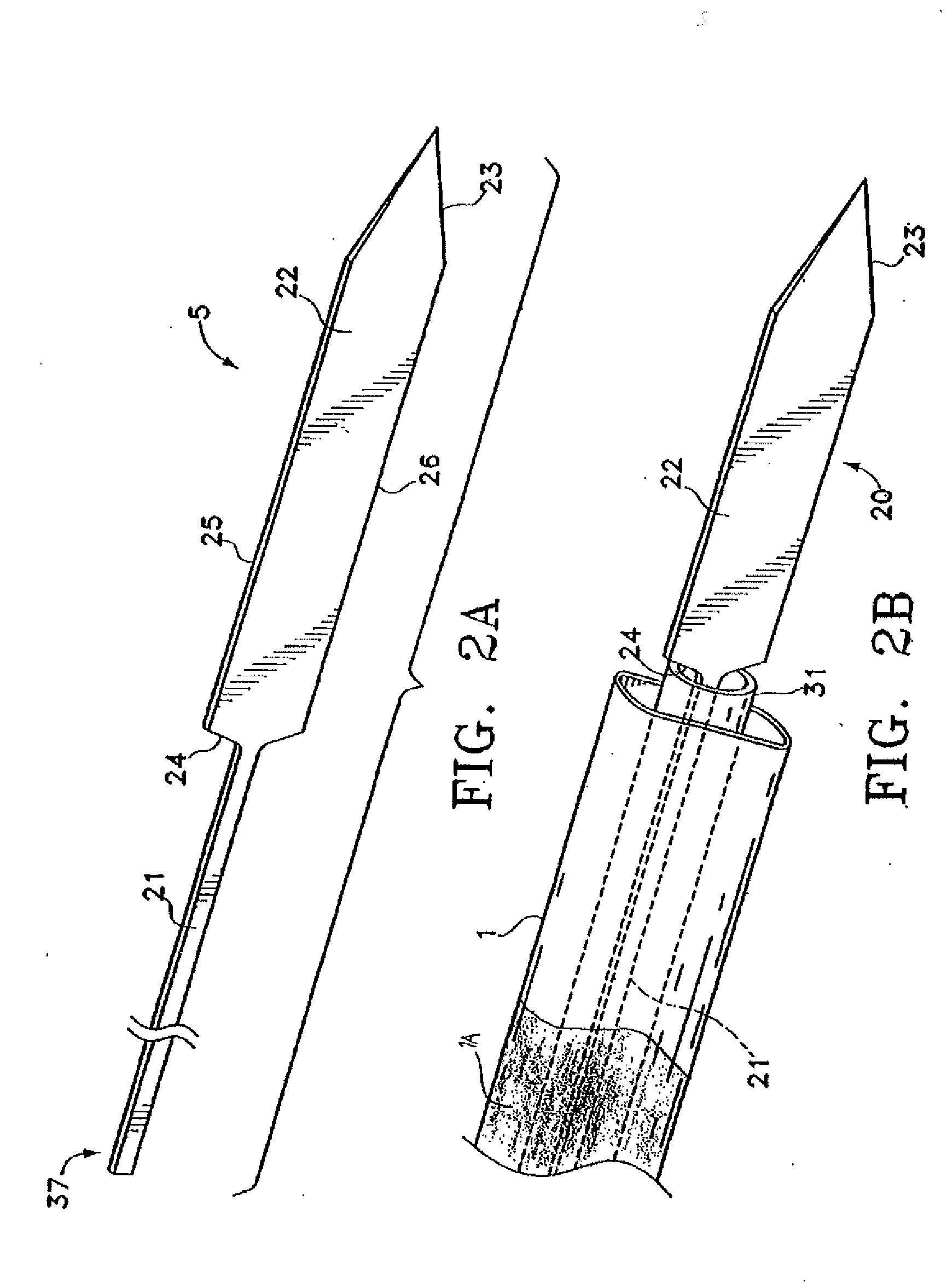Localization Element with Energized Tip
a technology of localization element and tip, which is applied in the field of tissue localization device, can solve the problems of difficult cytologist analysis of each sample, difficult-to-reliably-reach organ or tissue lesions, and severe limitations
- Summary
- Abstract
- Description
- Claims
- Application Information
AI Technical Summary
Benefits of technology
Problems solved by technology
Method used
Image
Examples
Embodiment Construction
[0077]Tissue localizing devices and locator elements having particular use in the present invention can have a variety of shape and configurations, including configuration such as those described in U.S. patent application Ser. No. 09 / 935,477, filed Aug. 22, 2001, PCT Application Serial No. PCT / US01 / 05013, filed Feb. 16, 2001, U.S. patent application Ser. No. 09 / 699,254, filed Oct. 27, 2000, U.S. patent application Ser. No. 09 / 613,686, filed Jul. 11, 2000, and U.S. patent application Ser. No. 09 / 507,361, filed Feb. 18, 2000, each of which is incorporated herein by reference in its entirety. These applications describe in detail various aspects of tissue localizing devices and methods for their deployment and excision.
[0078]Referring to FIG. 1, a particular variation of a tissue-localizing device according to the present invention is illustrated. The device has a sleeve 1 extending from the pusher assembly 3. The inner surface of the sleeve is preferably, but not necessarily, covered...
PUM
 Login to View More
Login to View More Abstract
Description
Claims
Application Information
 Login to View More
Login to View More - R&D
- Intellectual Property
- Life Sciences
- Materials
- Tech Scout
- Unparalleled Data Quality
- Higher Quality Content
- 60% Fewer Hallucinations
Browse by: Latest US Patents, China's latest patents, Technical Efficacy Thesaurus, Application Domain, Technology Topic, Popular Technical Reports.
© 2025 PatSnap. All rights reserved.Legal|Privacy policy|Modern Slavery Act Transparency Statement|Sitemap|About US| Contact US: help@patsnap.com



